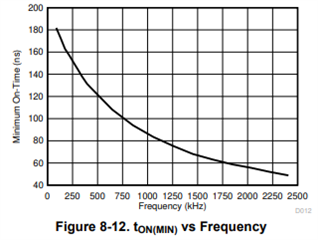Other Parts Discussed in Thread: LM5155, , TPS61175
Tool/software:
Hi,
I find that the Datasheet for the LM5156 does not define clearly how pulse skipping is implemented. Other related forum questions seem to suggest that the implementation is similar to other IC families such as LM5155 and APT61776 etc.
I have found Application Report SLVA353 - July 2009. This describes such a pulse skipping mechanism in some detail. Does the LM5156 use the same technique?
Thanks in advance
Aidan



